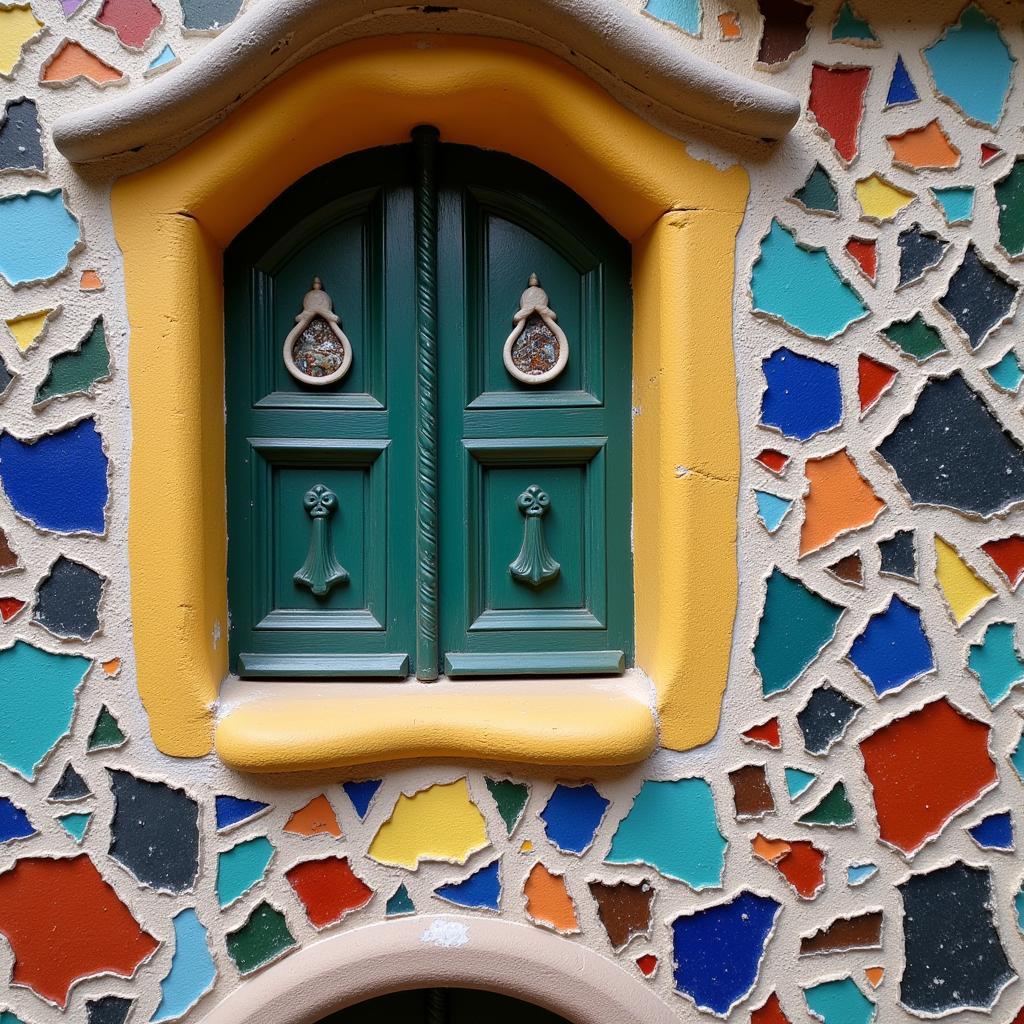Exploring the World of Famous Mosaic Art
Mosaic art, a testament to human creativity and patience, has captivated audiences for centuries. From ancient Roman villas to modern-day installations, these intricate artworks, composed of small pieces of colored glass, stone, or other materials, tell stories, depict scenes, and evoke emotions with remarkable depth and detail. Let’s delve into the fascinating world of Famous Mosaic Art, exploring its rich history, diverse techniques, and enduring appeal. After the introduction, we’ll dive deeper into specific examples and techniques. Discover the captivating allure of hand blown art glass in our related article.
A Journey Through Time: The History of Mosaic Art
The earliest known mosaics date back to the 8th century BC in Mesopotamia, utilizing pebbles and shells. Later, the Greeks and Romans elevated the art form, employing tesserae – small, precisely cut pieces of stone, glass, or ceramic – to create stunningly detailed scenes of mythology, daily life, and nature. These ancient mosaics, often found adorning the floors and walls of grand villas and public spaces, offer a glimpse into the artistic and cultural values of their time. The vibrant colors and intricate details of these early works are a testament to the skill and dedication of the artisans. Isn’t it amazing how such small pieces can create such grandeur?
Early Christian art often incorporated mosaics, using them to depict biblical scenes and religious figures within churches and basilicas. The shimmering gold tesserae, characteristic of Byzantine mosaics, created a sense of divine light and otherworldly beauty. This tradition continued throughout the Middle Ages and beyond, with mosaic art flourishing in Islamic art and architecture as well.
Famous Mosaic Artists and Their Masterpieces
Throughout history, numerous artists have pushed the boundaries of mosaic art, leaving behind a legacy of breathtaking masterpieces. One cannot discuss mosaic art without mentioning the stunning mosaics of Ravenna, Italy. The Basilica of San Vitale, for example, boasts intricate Byzantine mosaics portraying Emperor Justinian and Empress Theodora, showcasing the opulent artistry of the era.
Gaudi’s whimsical and colorful mosaics in Park Güell, Barcelona, are another iconic example of the medium’s versatility. His innovative use of broken ceramics and other found objects transformed the park into a fantastical mosaic wonderland. Explore the vibrant world of Africa art map in our related article.
 Gaudi's Park Güell Mosaic Detail
Gaudi's Park Güell Mosaic Detail
Modern Mosaic Art: A Renaissance of Creativity
Today, mosaic art continues to evolve, embracing new materials, techniques, and styles. Contemporary artists are experimenting with unconventional materials like recycled glass, mirror shards, and even plastic, pushing the boundaries of the medium and exploring new ways to express themselves. From large-scale public installations to intimate, personal creations, modern mosaic art demonstrates the enduring power and adaptability of this ancient art form. Do you ever wonder what inspires these artists?
“Modern mosaic artists are alchemists of the visual world,” says renowned mosaic artist, Anya Petrova. “They transform ordinary fragments into extraordinary expressions of beauty and meaning.”
Mosaic Techniques: From Traditional to Contemporary
Creating a mosaic involves meticulous planning and execution. Traditional methods involve carefully setting tesserae onto a prepared surface using mortar or adhesive. Different setting techniques, such as the direct method and the indirect method, offer varying degrees of control and flexibility. You might be interested in learning more about old bible art.
Modern mosaic artists have also embraced new technologies, incorporating digital design and fabrication processes into their work. Laser cutting, waterjet cutting, and other advanced techniques allow for greater precision and complexity in the creation of mosaic designs.
“The beauty of mosaic lies in its transformative power,” shares Marco Rossi, a master mosaicist. “It’s about taking broken pieces and creating something whole, something beautiful.”
What are the Most Common Materials Used in Mosaic Art?
Traditionally, mosaics have been created using materials such as stone, glass, and ceramic. However, contemporary artists often utilize a wider range of materials, including recycled glass, mirror shards, beads, and even found objects. The choice of materials greatly impacts the final aesthetic of the artwork.
How Can I Learn to Create My Own Mosaic Art?
There are numerous resources available for aspiring mosaic artists. Online tutorials, workshops, and classes can provide guidance on the basic techniques and materials. Experimenting with different materials and styles is key to developing your own unique artistic voice. Learn more about art blakey and the jazz messengers mosaic.
 Modern Mosaic Art Abstract Design
Modern Mosaic Art Abstract Design
Conclusion: The Enduring Allure of Famous Mosaic Art
From ancient civilizations to the present day, famous mosaic art has captivated and inspired. Its ability to transform fragments into cohesive and beautiful wholes, to tell stories through intricate detail, and to evoke emotions through color and form, ensures its continued relevance in the art world. As we’ve explored the history, techniques, and diverse expressions of mosaic art, we’ve discovered a vibrant and ever-evolving medium that continues to challenge and delight. Consider adding a touch of hand blown art glass to your home decor. Explore the beauty and significance of Christian art Christmas.
FAQ
- What is the difference between a mosaic and a collage?
- What are some famous examples of mosaic art around the world?
- What are the basic tools and materials needed for creating a mosaic?
- How long does it take to create a mosaic artwork?
- What are some tips for beginners in mosaic art?
- Where can I find mosaic art classes or workshops?
- How do I care for and maintain a mosaic artwork?
For further support, please contact us at Phone Number: 02462573573, Email: danteum@gmail.com, or visit our address: Savico Megamall, 7-9 Đ. Nguyễn Văn Linh, Gia Thụy, Long Biên, Hà Nội 10000, Việt Nam. Our customer service team is available 24/7.
